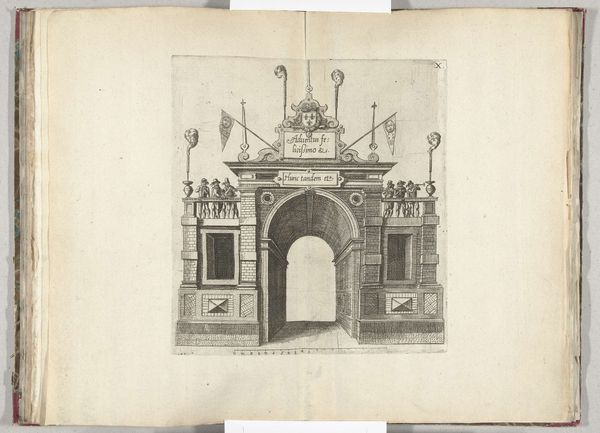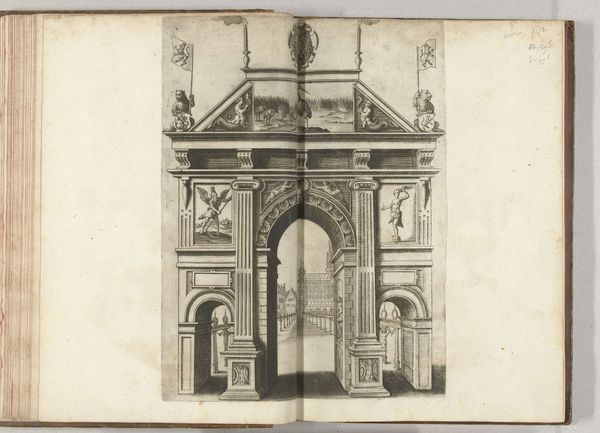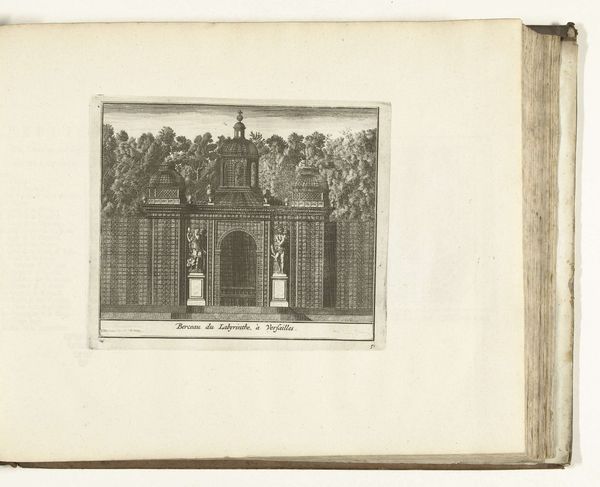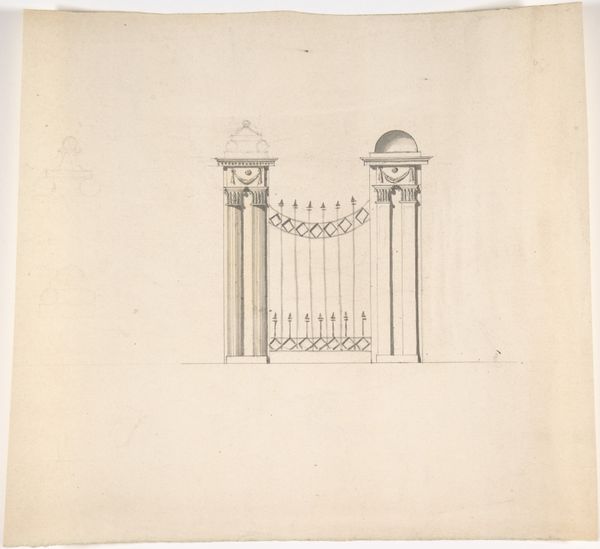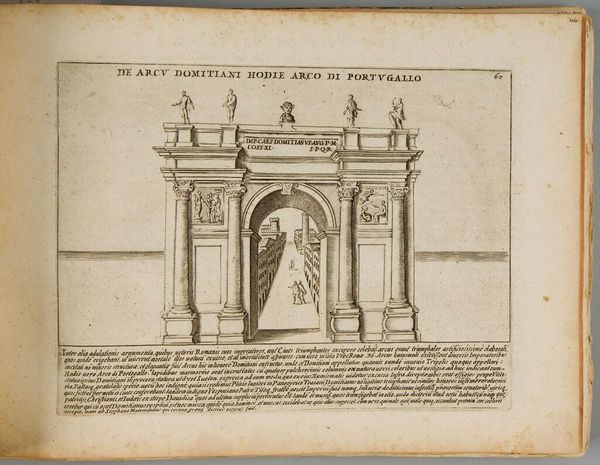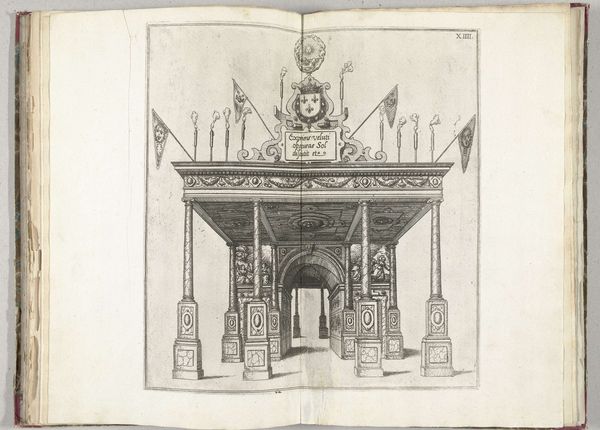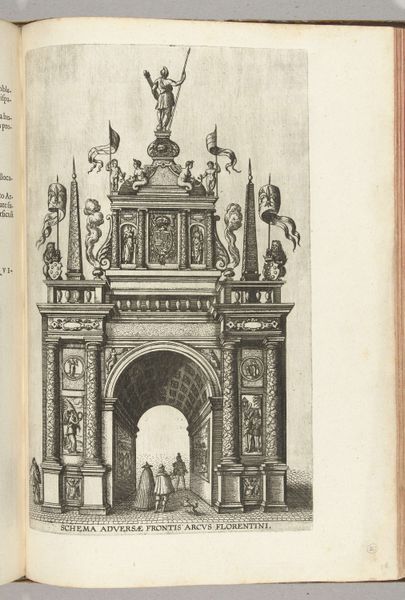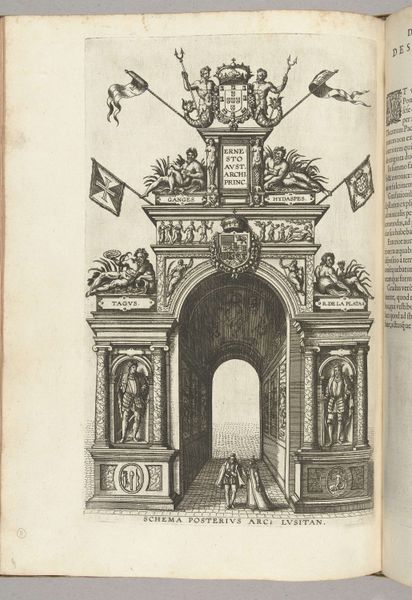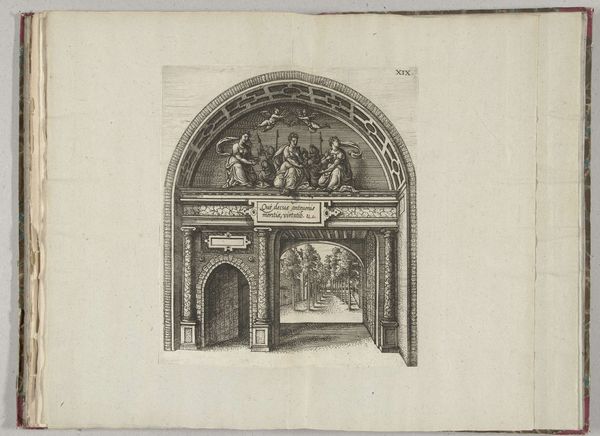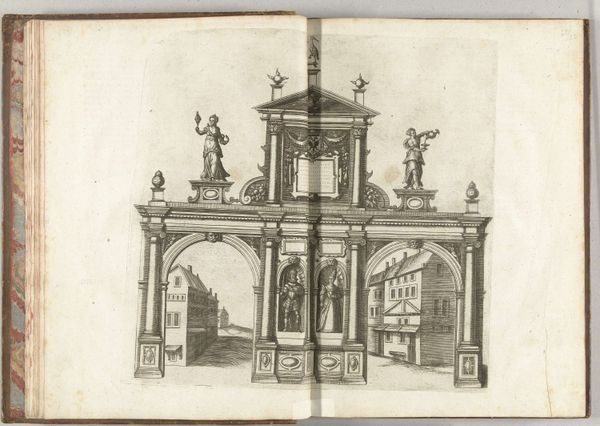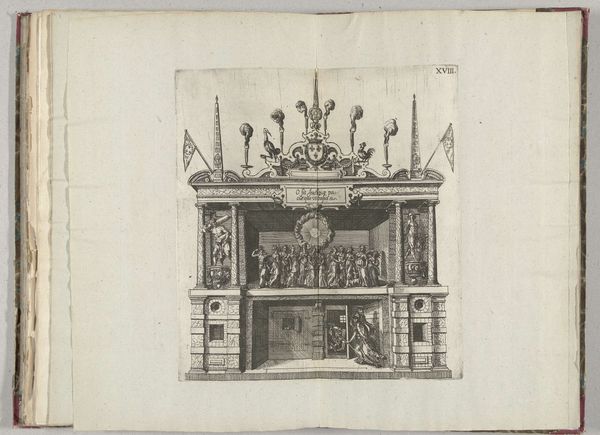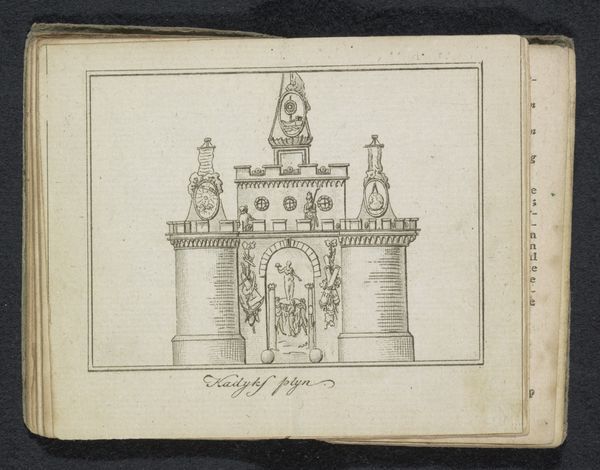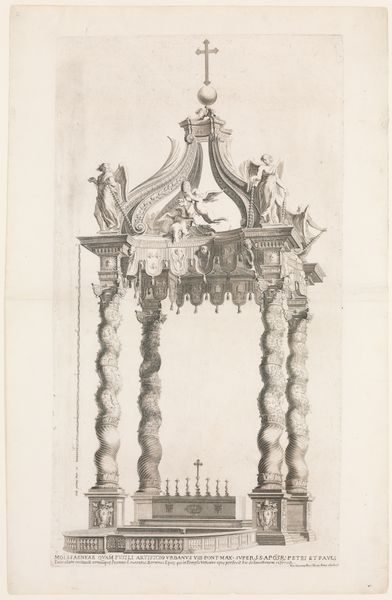
drawing, paper, engraving
#
drawing
#
paper
#
11_renaissance
#
coloured pencil
#
geometric
#
sketchbook drawing
#
cityscape
#
engraving
Dimensions: height 227 mm, width 211 mm
Copyright: Rijks Museum: Open Domain
Curator: Let's consider this fascinating print, *Erepoort bij de Muntpoort, 1582*, created anonymously. It's an engraving on paper, offering a meticulous rendering of a city gate. What are your initial impressions? Editor: The precision is striking. The repeated columns creating a forced perspective are certainly attention-grabbing, giving it an almost theatrical feel, as if the city itself is staging a grand entrance. It appears to be more of a technical drawing than a traditional landscape, perhaps? How do you interpret this work, especially its material context? Curator: Exactly! We need to see this work not just as a depiction, but as a product of specific labor and material conditions. The use of engraving, a repeatable process, suggests a purpose beyond mere aesthetics. Consider the role of printmaking in disseminating architectural ideas during the Renaissance. This engraving functions as a tool – it allows architectural designs to be circulated, adapted, and potentially implemented. Look closely at the line work. Do you think the engraver's skill impacts how the city gate might be perceived? Editor: I suppose it does. The detail almost elevates the structure, and standardizes it in some way. It feels less like a singular, unique piece of architecture and more like a model that can be replicated. That really highlights the intention to make it reproducible, shifting it towards more utilitarian. Was the cost and the making of such prints a concern at the time? Curator: Absolutely. Paper quality, the cost of copper plates, the engraver's fees, all played a crucial role in determining the reach and influence of such images. Moreover, consider the socio-political context – perhaps this was commissioned to celebrate a particular event or ruler, aiming to project an image of power and stability? Who would this be consumed by and where might this image travel to? Editor: Thinking about it that way reveals a whole new layer of meaning! What initially seemed like a simple city view now appears to be part of a larger network of material production, distribution, and socio-political agendas. I hadn't considered the layers of material and manufacturing behind such old drawings. Curator: Precisely! It reminds us that even seemingly straightforward images are deeply enmeshed in their material and social circumstances, affecting consumption, production, labor and the development of artistic skill. It's always about labor and distribution, even hundreds of years ago.
Comments
No comments
Be the first to comment and join the conversation on the ultimate creative platform.
